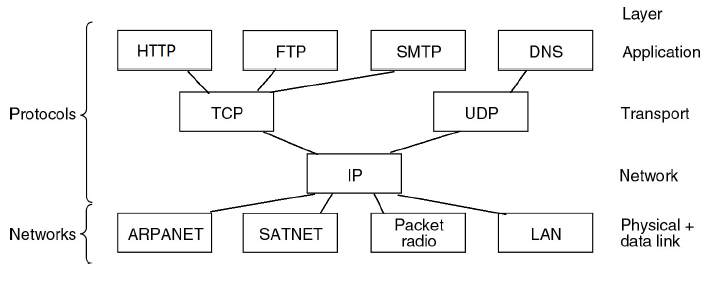Network 1: Layered Architecture
According to wikipedia, a Computer Network is a collection of computers and devices interconnected by communication channels that facilitate communications among users and allows users to share resources. Some of the network issues are listed in the following picture.

$$\text{Maximum Data Rate}=\begin{cases}2H\cdot log_2 V & \text{Nyquist, without noise}\\ H\cdot log_2(1+S/N) & \text{Shannon Theorem}\end{cases}$$
An important concept relevant to computer networking is Protocol, which "defines the format and the order of messages exchanged between two or more communicating entities, as well as the actions taken on the transmission and/or receipt of a message or other event". The Internet standards documents, which are called Requests for Comments (RFCs), are developed by the Internet Engineering Task Force (IETF) and define protocols such as TCP, IP, HTTP and SMTP. The Eithernet and wireless WiFi standards are developed by IEEE 802 LAN/MAN Standards Committee.

In order to reduce design complexity, protocols are organized into a layered architecture, which also guarantees the independence and flexibility of different protocols. A layer provides services to a layer above by using the services of the layer directly below it and performing certain actions within that layer. A service is connection-orientated if a connection is established before communication, otherwise it is connectionless. Services that never lose data are called reliable services.

The TCP/IP Reference Model consists of four protocol layers: application layer, transport layer, Internet layer and network interface layer. In Internet, a protocol called IP bridges different applications over different networks and thus interconnects all autonomous computers.

References:
1. Kurose, James F., Keith W. Ross. Computer Networking: a top-down approach[M]. 北京:高等教育出版社, 2009-08




 浙公网安备 33010602011771号
浙公网安备 33010602011771号